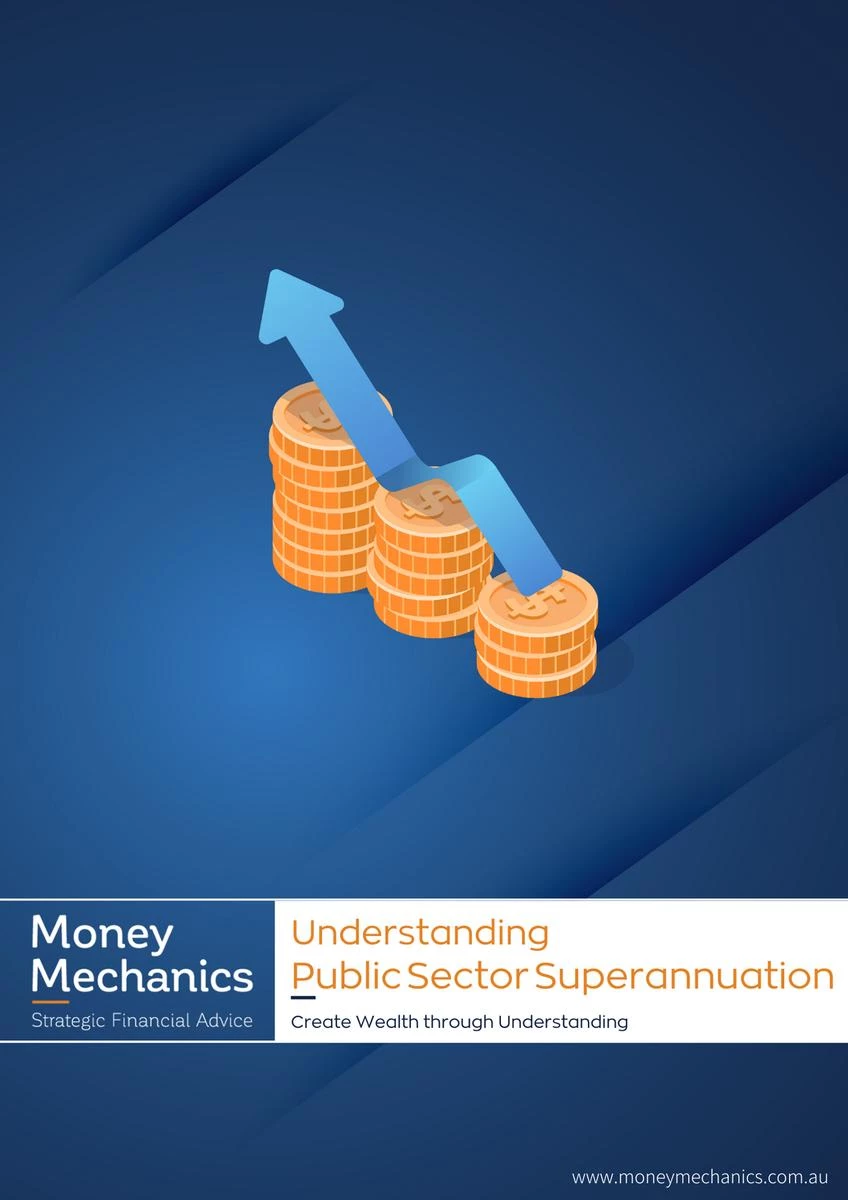Public Sector Super Scheme
Scott Malcolm has been working with clients who have government defined benefit superannuation memberships since commencing in the industry in 2000 so knows the ins and outs of these schemes.
In order to maximise your retirement income, it is important to start planning early to ensure that you maximise the benefits provided by the superannuation funds while also staying within your contribution limits. Each fund has benefits and limitations with regards to contribution amounts, insurance and disability protection and estate planning, transfer of benefits into the fund and how to maximise your retirement benefits based on your career plans and life goals.
Money Mechanics have experience working with clients who have the following public sector super scheme memberships:

Commonwealth Superannuation Scheme (CSS)
The accumulation fund consists of member and productivity contributions where the value of the contributions and investments determines the benefits.
The defined benefit fund is the employer component which is unfunded and generally paid as a lifetime non-commutable indexed pension.
Contributions
The productivity component is where the employers pay a fortnightly contribution into the scheme and this amount is reflected on an individual member’s super salary.
Benefit Payments
Lump sums are generally paid to former members of the scheme due to their retirement and preserving their benefit for later payment. Summaries are paid from the CSS fund and by the Australian government.
CSS also provides partial invalidity, full invalidity and death benefits. In addition to any current medical conditions, the member will receive benefits based on the amount they would have received if they had worked to their maximum retirement age. When the salary of a contributing member is permanently reduced by medical conditions, a partial invalidity pension – a form of income maintenance – is paid.
Public Sector Superannuation Scheme (PSS)
The member component consists of member contributions and Fund earnings. PSS members can make contributions of between 2 and 10% of members’ salary for super purposes or they can choose to elect no contributions.
Contributions
Those contributions are, in most circumstances, paid each fortnight into the PSS Fund. When you contribute your employer also pays an employer productivity contribution of approximately 3% of superannuation salary into the PSS Fund. The defined benefit also includes an unfunded component that depends on the level of your contributions.
The employer component includes two parts being employer productivity contributions plus Fund earnings and the unfunded benefit balance. These are determined when the member leaves their eligible employment. The productivity component is where the employers contribute a fortnightly pay into PSS with the amount being based on an individual member’s super salary. The remaining employer portion is finalised when a member terminates their contribution to the scheme.
Benefits
Benefits are generally paid when a member exits the scheme at retirement and preserves their entire benefit for payment at a later date. It is usually not possible to obtain these benefits until a member has permanently retired from working and reached the minimum retirement age
Partial invalidity, full invalidity and death benefits are also offered by PSS where contributors can choose to purchase additional death and invalidity cover, subject to those members meeting underwriting requirements.
Assuming the individual worked until the age of 60, the benefits would be based on what the individual would have received if they had worked until then. Contributors who reach age 60 receive a pension based on the retirement salary they would have received at that age.
Partially invalidity pensions are paid when a medical condition permanently reduces a member’s salary.
Public Sector Superannuation Accumulation Plan (PSSap)
Following the deduction of fees and taxes, investment returns are calculated as compounded average returns. Employers that participate in the scheme contribute 15.4% of their employees’ pay on their behalf.
Additionally, PSSap offers an ancillary membership to eligible CSS and PSS members who can make additional contributions and transfers, and a retirement income product known as CSCri (Commonwealth Superannuation Corporation retirement income) to eligible public sector scheme members.
Contributions
Benefit payments
Defence Force Retirement & Death Benefits Scheme (DFRDB)
Contributions
Payment Benefits
DFRDB customers are entitled to lump sum and invalidity benefits.
DFRDB members finishing a period of ADF service can convert a portion of their DFRDB retirement pay to obtain a lump sum payment, upfront. If a customer decides to commute, their retirement pay is permanently reduced no matter how long they live for. There is a possibility for retirees to commute their pensions up to a maximum of 5 times its value.
DFRDB also offers invalidity and death benefits. When a customer is medically transitioned from the ADF, they may be allowed to claim the invalidity benefits. The invalidity benefit includes 3 classifications which are:
- Class A: Significant incapacity
- Class B: Moderate incapacity
- Class C: Low incapacity (no entitlement to an invalidity pension)


